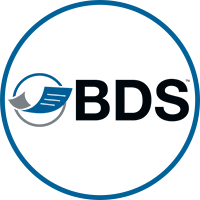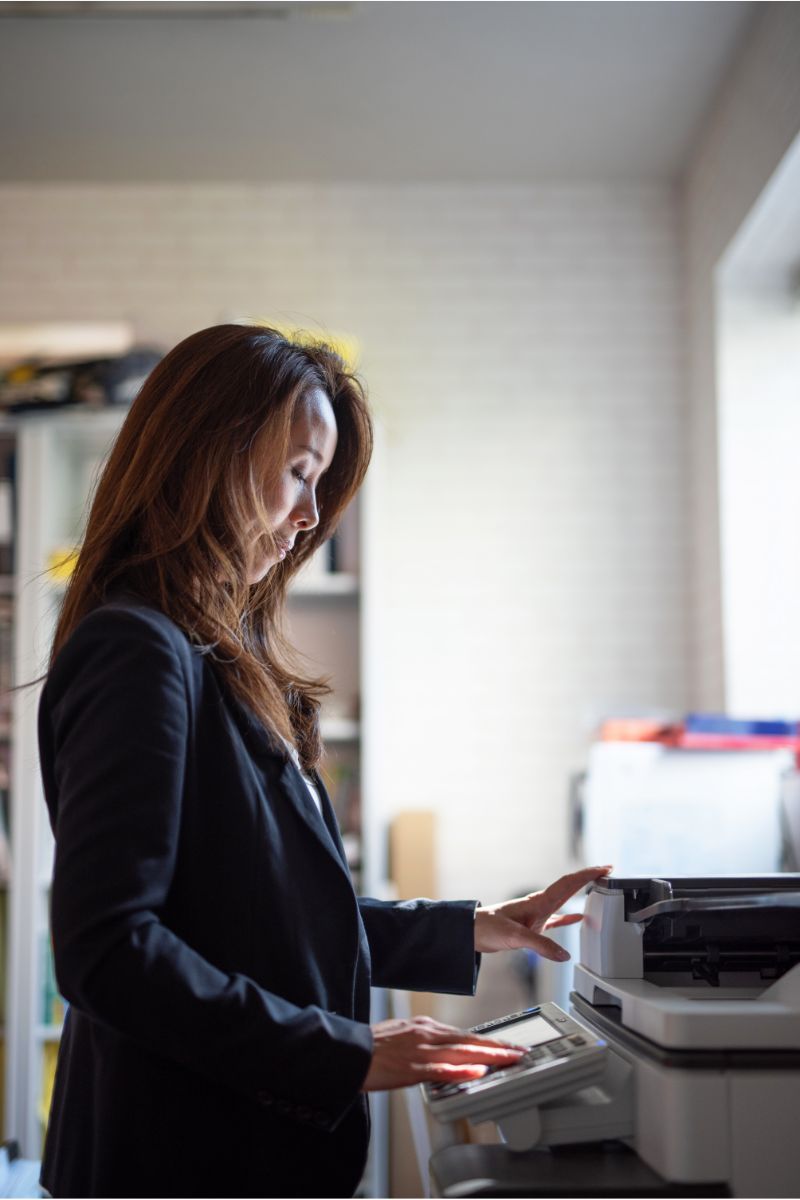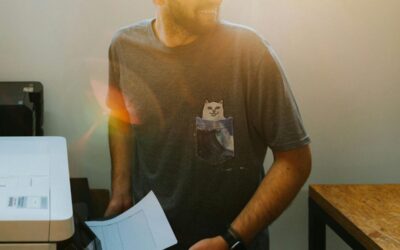A bleed is when there is no margin left.
Why is bleed printing important?
Bleed printing is essential in the printing industry. It is especially relevant for creating professional-quality printed materials, such as brochures, flyers, business cards, and other marketing materials.
Bleed printing is a technique that involves extending the design of a printed piece beyond its final trim size. This allows for any minor variations in trimming to be compensated for, ensuring that the printed piece appears seamless and professional.
Printing without bleed avoids irregularities like white trim lines or a white border. This only occurs when trimming is not perfect.
In short, having your bleed settings set up is essential for producing high-quality printed materials that look professional and polished. It ensures that the final document size meets the exact specifications of the design and looks as intended.
How to add a bleed to a document?
Adding or editing bleed in a document requires using a graphic design software program such as Adobe InDesign, Adobe Illustrator, or similar software.
Here are the general steps to add or edit bleed in a document:
- Open the document in your graphic design software program.
- Check the document settings to ensure the bleed area is set up correctly. In Adobe InDesign, for example, you can go to “File” > “Document Setup” and enter the desired bleed size (usually 3mm to 5mm is standard).
- Next, you need to extend the design or images beyond the final trim size of the sheet of paper. To do this, you can create a bleed margin the same size as the bleed area you specified in the document setup.
- Extend the design or images to the bleed margin.
- Check if they are aligned with the rest of the document.
- Finally, you can save the document with bleed by exporting it to a PDF file. When exporting the file, be sure to check the box to include bleed and crop marks in the output.
It is important to note that adjustments may be necessary when adding bleed to an existing document. This ensures that the bleed area does not contain any important information or graphics on the top or bottom. Always check the final output to ensure that everything looks as intended.
When not to apply a full bleed?
While bleed is an important aspect of printing, there are certain situations where it may not be necessary or appropriate. Here are a few scenarios where bleed may not be required:
- When printing documents that have borders or frames around the edges. In this case, the borders or frames can be designed to fit within the trim area, eliminating the need for bleed.
- When printing documents with solid background colors that are not intended to extend to the edge of the paper. In this case, the background color can be designed to fit within the trim area, again eliminating the need for bleed.
- When printing documents that do not have any images or graphics that extend to the edge of the paper. In this case, there is no need for bleed since the design elements do not extend beyond the trim area.
- When printing on specialty papers that are difficult to trim or incompatible with bleed printing. In this case, the design can be adjusted to fit within the trim area of the specialty paper.
There may be no need for bleed in printing if no design elements extend beyond the trim area. The design can be adjusted to fit the trim area.
However, it’s always best to consult a professional printer to determine the best approach for your specific printing needs. If you have any questions about bleed areas or what types of materials are best to extend into bleed areas, contact us today!






